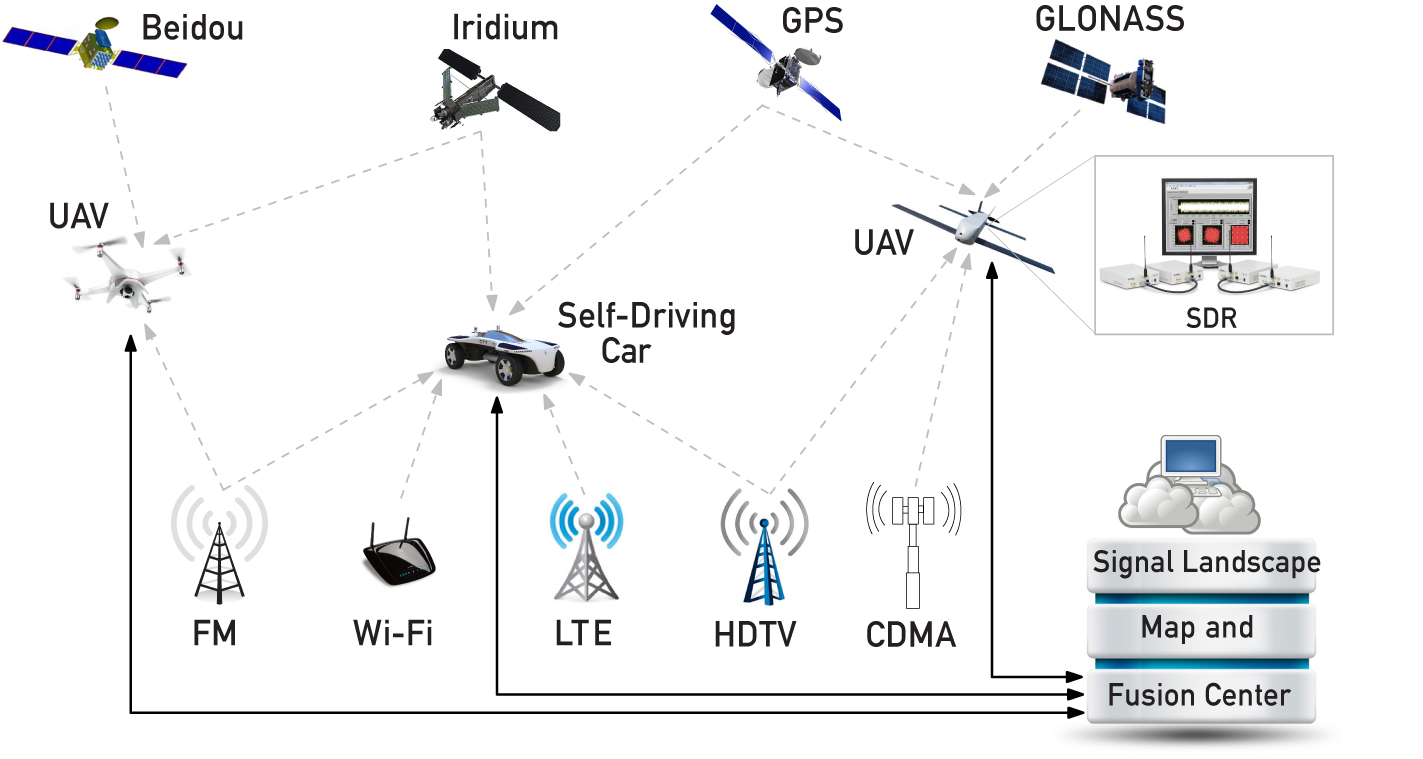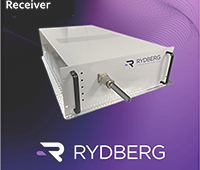
A schematic showing how Zak Kassas, assistant professor of electrical and computer engineering at UC Riverside, and his team are using existing communications signals to complement satellite-based navigation systems like GPS for the control of driverless cars and unmanned aerial vehicles (UAVs). (Credit: ASPIN Laboratory at UC Riverside)
Researchers are tapping into existing environmental signals in an effort to improve navigations systems for fully autonomous vehicles, including driverless cars and unmanned drones.
A team at the University of California, Riverside has developed a “highly reliable and accurate” navigation system that exploits the use of existing environmental signals including cellular and Wi-Fi, that can be used as an alternative to GPS or to complement current GPS-based systems.
Zak Kassas, assistant professor of electrical and computer engineering in UCR’s Bourns College of Engineering, said the current trend in the field is to utilize sensor-based technologies like cameras, lasers and sonar to implement navigation systems in autonomous cars, but his plan is to produce better navigation systems using existing signal-based technology that will meet the stringent requirements for navigation in autonomous vehicles.
“By adding more and more sensors, researchers are throwing ‘everything but the kitchen sink’ to prepare autonomous vehicle navigation systems for the inevitable scenario that GPS signals become unavailable,” Kassas said in a statement. “We took a different approach, which is to exploit signals that are already out there in the environment.”
Along with cellular and Wi-Fi signals, Kassas and his team in UCR’s Autonomous Systems Perception, Intelligence, and Navigation (ASPIN) Laboratory, have been developing autonomous vehicles that could utilize radio, television and other satellite signals, which are dubbed “signals of opportunity (SOP).”
The majority of existing navigation systems in cars and portable electronics use space-based Global Navigation Satellite Systems, but precision technologies like aerospace and missiles typically combine GPS with a high-quality on-board Internal Navigation System. This delivers a high-level of short-term accuracy but eventually drifts when it loses touch with external signals.
Despite advancements in technology, current navigation systems do not meet the demands of future autonomous vehicles because the GPS signals are extremely weak and unusable in certain environments, like deep canyons.
Other issues include GPS signals being susceptible to intentional and unintentional jamming and interference and civilian GPS signals are unencrypted, unauthenticated and specified in publicly available documents, making them able to be hacked.
Kassas presented two studies at the 2016 Institute of Navigation Global Navigation Satellite System Conference (ION GNSS+) in Portland, Ore., in September, where his team presented theoretical analysis of SOPs in the environment, building specialized software-defined radios (SDRs) that will extract relevant timing and positioning information from SOPs, developing practical navigation algorithms, and finally testing the system on ground vehicles and unmanned drones.
“Autonomous vehicles will inevitably result in a socio-cultural revolution,” Kassas said. “My team is addressing the challenges associated with realizing practical, cost-effective, and trustworthy autonomous vehicles.
“Our overarching goal is to get these vehicles to operate with no human-in-the loop for prolonged periods of time, performing missions such as search, rescue, surveillance, mapping, farming, firefighting, package delivery and transportation,” he added.
The two studies, “Signals of Opportunity Aided Inertial Navigation” and “Performance Characterization of Positioning in LTE Systems,” both won best paper presentation awards.
Along with Kassas, graduate students Joshua Morales, Joe Khalife, Kimia Shamaei, Jesse Garcia, and Sonya Ragothaman and undergraduate student Souradeep (Gogol) Bhattacharya contributed to this research, which was funded with support from the Office of Naval Research (ONR). Additional videos of the team’s research can be viewed on the ASPIN Laboratory’s YouTube page.




